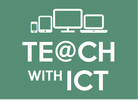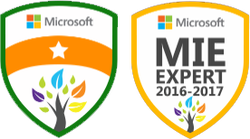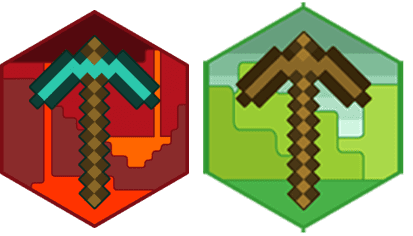|
In this week’s lesson, I continued the theme of how data is stored in computers however, this time, focusing on binary to denary conversion. Learning Objectives:
Lesson 1: Theory (Binary) Suggested time: 50 mins Starter: I started by displaying my favourite binary joke on the board: “There are 10 types of people in the world: Those who understand binary and those who don’t” After a quick scan of the classroom to gage how many people got the joke, I explained to the class that I would reveal the punchline at the end of the lesson. Main: I began by explaining that data in computers is stored and transmitted as a series of zeros and ones. I followed this with a fun and engaging activity I found on CS Unplugged called counting the dots: http://csunplugged.com/sites/default/files/activity_pdfs_full/unplugged-01-binary_numbers.pdf I started by choosing 5 volunteers, and gave each volunteer one of five cards (each with dots on one side and nothing on the other). See attached: I began by asking the students what they noticed about the number of dots on each card (I waited for the students to identify that each card had twice as many dots as the previous card) I then asked students how many dots would the next two cards have and why. Next, I asked the 5 volunteers to flip their cards over one at a time and, with input from the rest of class, explained what each card represented. I followed this by asking the volunteers to make other numbers such as 6 (4-dot and 2-dot card) and 21 (16-dot, 4-dot and 1-dot cards). I then asked the students to flip over all their cards (so that all the dots were facing forward) and asked the rest of the class to calculate the total and explain how they worked it out. Finally, I challenged the volunteers to count from zero to 31 by flipping the cards in sequence. For an example of how to deliver this activity, see the video below: I finished this with a selection of worksheets courtesy of CS Unplugged (Click here) Plenary: Finally, I showed the binary joke on the board again and asked the students to explain the punch line. Lesson 2: Raspberry Pi Challenge Suggested time: 50 mins Starter: I started by asking the students “What factors (things/characteristics) make a difference to a computer’s performance?” I asked students, in pairs, to write down their answers and followed this with a discussion about obvious factors such as speed. Main: Next, to introduce the main task, I asked students “How can we test how factors such as CPU, memory and secondary storage can affect the performance of a computer?” The aim here was to encourage students to think about benchmarking through controlled experiments and recording their findings (I linked this to experiments they may have conducted in science and students to discuss how they could make sure the results of the experiments were both accurate and reliable). I then split the students into small groups of 3 and gave each group a copy of the OCR Classroom Challenge – Worksheet 8: How hardware characteristics can affect the performance of a computer (Click here). For the teacher version, which includes suggested possible outcomes, click here. I then instructed the students to power up their Raspberry Pis and attempt task 2 of the worksheet. (Note: This activity provides a perfect opportunity to reinforce hardware theory and encourages students to investigate how hardware characteristics such as CPU speed, memory and secondary storage can affect the performance of a computer.) Resources:
Extension:
Those students who were able to complete task 2, with time to spare, were asked to attempt task 3 of the worksheet. Alternative: Alternatively, if you do not have access to a set of Raspberry Pis, students can attempt some more hour of code tutorials on TouchDevelop: https://www.touchdevelop.com/hourofcode Plenary: Students were asked to share their results from Raspberry Pi task with the rest of the class and discuss the findings. Comments are closed.
|
AuthorSimon Johnson Microsoft Innovative Educator Expert / MIE Trainer
Minecraft Cert. Educator / Global Mentor
CAS Master Teacher
Raspberry Pi Cert. Educator
Tickle Ambassador
Archives
June 2017
CategoriesAll Algorithms Cpu Fundamentals Hardware Input & Output Memory OCR A451 Software Storage |
Search by typing & pressing enter






 RSS Feed
RSS Feed
